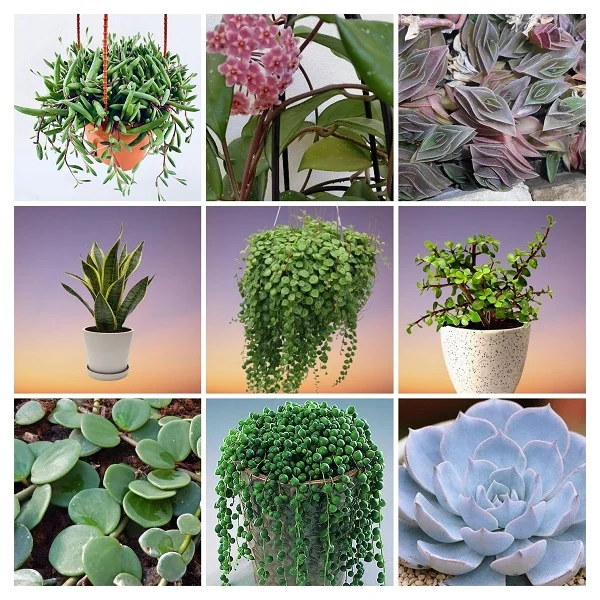21 Types of Cactus Plants You Can Grow at Home with Names and Pictures
Some links in this post may be affiliate links
Cactus or Cacti are hardy, succulent plants with thickened, fleshy parts adapted to store water which is an adaptation to their native very dry growing conditions which includes the Atacama Desert.
In most Cacti, the stem is the only part where water storage takes place unlike in other succulents. Most Cacti have lost true leaves and only have spines, which are highly modified leaves.
The spines help prevent water loss by reducing air flow around the plant and providing some shade as well as making the plant unpalatable to herbivores.

Since Cactus do not have true leaves, photosynthesis (the process of making food in plants) occurs in the enlarged stems. The surface of the stem may be smooth or covered with protuberances of various kinds, usually called tubercles.
The stems are often ribbed or fluted which allows them to expand and contract easily for quick water absorption after which they retain it over long drought periods.
However, there are 3 groups of Cactus which bear true leaves and stems; Pereskia (Rose Cactus), Leuenbergeria and Rhodocactus.
Cactus belong to the Cactaceae Family which comprises of about 127 genera and about 1,750 known species in the order Caryophyllales.
Most cacti employ the CAM (Crassulacean Acid Metabolism). CAM plants harvest Carbon dioxide at night and use it during the day to make their food through the process of photosynthesis.
As they make food during the day, they store the oxygen they produce in the process and release it at night. This is an adaptation of CAM plants to their drought-prone climate to conserve moisture which enables them to survive the harsh climate.
Cactus can be divided into two groups based on their natural habitat; Desert Cactus and Forest Cactus. The Desert Cactus are more popular as they are much easier to grow making them perfect for beginners and busy plant parents. Learn how to grow, care and propagate Desert Cactus.
The Forest Cactus are epiphytic plants whose stems are typically flattened, appear leaf-like, with fewer or even no spines and include Christmas Cactus, Thanksgiving Cactus and Easter Cactus.
Would you like to add Cactus Plants to your plant collection? You may acquire beautiful Cactus Plants from Amazon (Link to Amazon). We have herebelow outlined herebelow 21 of the most popular Cactus Plants that are perfect for your home.
21 Kinds of Cactus Plants for the Home
Popular Cactus Plants are Rebutia, Parodia, Mammillaria, Aporocactus, Chamaecereus, Cereus, Echinocactus, Ferocactus among others.
1. Rebutia spp
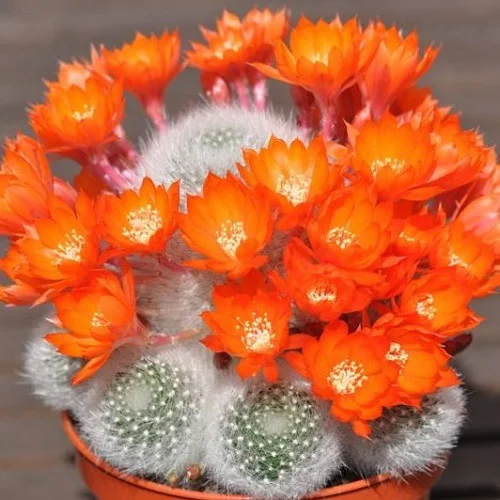
Rebutia species are small, colorful, globular Cacti with regularly arranged small tubercles and freely produce flowers that are relatively large in comparison to the body.
They are native to Bolivia and Argentina and are easy to grow and propagate as they readily produce viable seeds which germinate around the mother plant.
The Rebutia Genus was described by Karl Moritz Schumann in 1895 who named it after Pierre Rebut (1828–1902), a French cactus nurseryman.
Common types of Rebutia include Rebutia minuscula, Rebutia heliosa, Rebutia arenacea (Arenaceous Crown Cactus), Rebutia canigueralii, Rebutia breviflora, Rebutia fabrisii, Rebutia steinbachii (Steinbach's Crown Cactus) among others.
2. Parodia spp
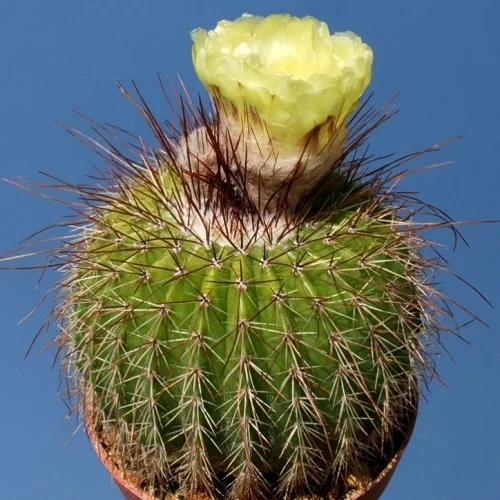
Parodia species are deeply ribbed and spiny globular or columnar Cacti with single flowers at or near the crown.
Parodia Genus was first described in 1923 by the Italian-Argentinian botanist Carlos Luis Spegazzini who named it after Domingo Parodi, one of the early investigators of the flora of Paraguay.
The genus comprises of about 65 species which are native to Argentina, Bolivia, Brazil,Paraguay and Uruguay.
The common species include Parodia magnifica, Parodia tenuicylindrica, Parodia ottonis (Indian Head Cactus), Parodia mammulosa, Parodia herteri, Parodia crassigibba (Green Tomato Cactus), Parodia buiningii among others.
3. Mammillaria spp

Mammillaria species have a distincive areole split in two clearly separated parts with one occurring at the apex of the tubercle and the other at its base.
The apex part bears spines but the base part is always spineless and usually bears some bristles or wool. The flowers and fruits arise from the base part and it is also the branching point.
Mammillaria Genus is one of the largest in the Cactaceae Family as it comprises of about 200 species which are mainly native to Mexico with some few species coming from southwest United States, the Caribbean, Colombia, Venezuela, Guatemala and Honduras.
The common Mammillaria species in cultivation include Mammillaria hahniana (Old Lady Cactus), Mammillaria discolor, Mammillaria barbata (Greenflower Nipple Cactus), Mammillaria parkinsonii (Owl-eye Pincushion or Owl-eye Cactus), Mammillaria baumii among others.
4. Aporocactus spp
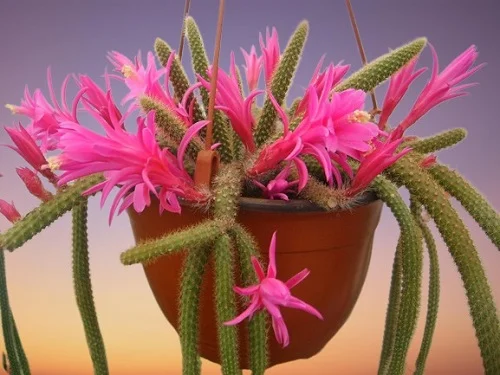
Aporocactus species are epiphytic plants found growing on tree branches which bear drooping or creeping stems about 2 ft long with 6 ribs covered with many small spines.
The two common species of Aporocactus are Aporocactus martianus synonym Disocactus martianus found in Oaxaca, Mexico and bears bright red, diurnal flowers in summer and Aporocactus flagelliformis (Rattail Cactus) synonym Disocactus flagelliformis native to Hidalgo, Mexico and bears crimson-pink, diurnal flowers.
Due to their drooping long stems, Aporocactus are popular plants for a hanging basket, pedestal, tabletop or shelf where the stems can be allowed to hang down freely. These cactus are a sight to behold when they put out their charming flowers.
5. Chamaecereus silvestrii
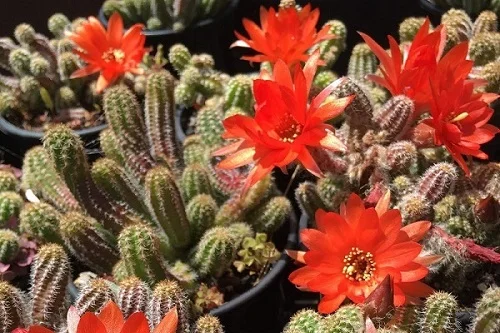
Chamaecereus silvestrii commonly called Peanut Cactus bears mat-forming, long stems about 0.4 in across with 8-10 ribs and small, soft bristles.
Peanut Cactus bears a profusion of orange, funnel-shaped flowers in late spring to early summer. It has gained the Royal Horticultural Society's Award of Garden Merit.
Chamaecereus silvestrii also goes by the names Echinopsis chamaecereus or Lobivia silvestrii and is native to northwestern Argentina and Bolivia. It was was first collected and described as Cereus silvestrii in 1896 by Italian-Argentinian botanist Carlo Luigi Spegazzini.
6. Cereus spp
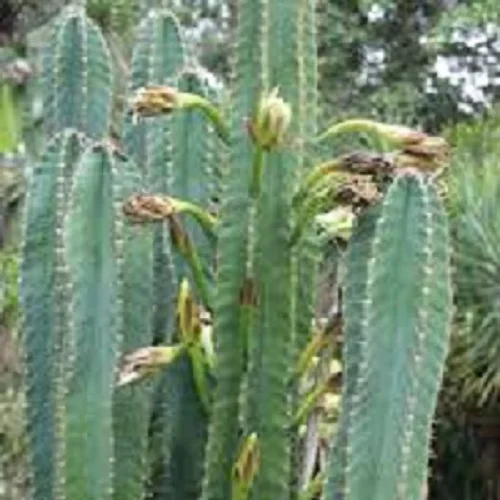
Cereus species are large shrubby or treelike Cactus with angled or distinctly ribbed stems which have large areoles and often bear spines and can grow to a height of 50 feet.
The flowers are large, funnel-shaped usually white but can be pink, purple, cream, yellow or greenish which open at night.
Cereus was among the first Cactus genera to be described and is derived from Greek and Latin words meaning "wax", "torch" or "candle" in reference to the candle-like form of species Cereus hexagonus (Lady of the Night Cactus).
Other common species in this Genus include Cereus aethiops, Cereus forbesii, Cereus fricii, Cereus phatnospermus and Cereus spegazzinii among others.
7. Echinocactus spp
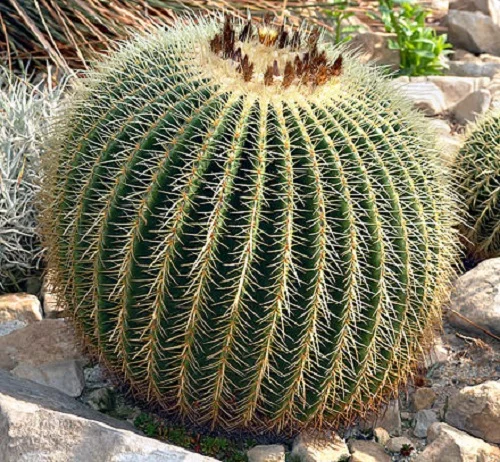
Echinocactus is one of the two genera of Barrel Cactus (the other being Ferocactus) with numerous and pronounced ribs, long spines whose color ranges from yellow to tan to red.
The flowers are small and appear at the top of the plant after many years. The fruits are copiously woolly which distinguishes Echinocactus from Ferocactus.
The most common species in this Genus include Echinocactus grusonii (Golden Barrel Cactus, Golden Ball or Mother-in-law's Cushion) which can grow to a height of 3 ft, Echinocactus parryi (Horse Crippler or Devil's Pincushion), Echinocactus polycephalus (Cotton Top Cactus) and Echinocactus platyacanthus (Giant Barrel Cactus or Giant Golden Barrel Cactus) which can grow to a height of 8 ft and 5 ft wide, among others.
8. Ferocactus spp
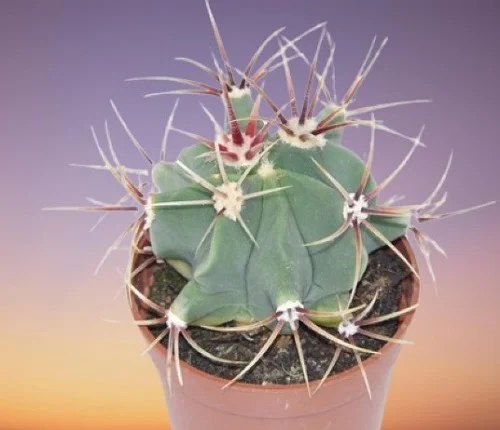
Ferocactus species are Barrel Cactus which start off in columnar form but as they grow older, the ribs form and they take on a barrel form.
The flowers are small, borne at the top of the plant, come in pink, yellow, red or purple and the petals may have a stripe of a darker colour.
There are about 30 species in this Genus which are found in the southwestern United States and northwestern Mexico. The most common species are Ferocactus haematacanthus, Ferocactus glaucescens (Glaucous Barrel Cactus) which bears long yellow spines and yellow flowers in summer, Ferocactus robustus among others.
9. Echinopsis spp
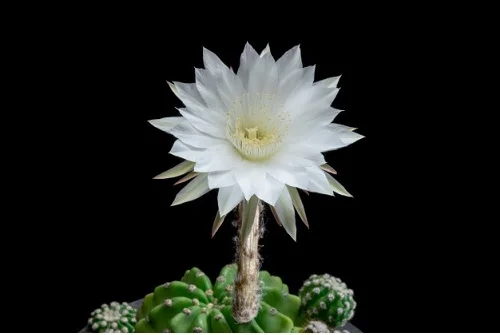
Echinopsis species commonly called Sea-urchin Cactus, Hedgehog Cactus or Easter Lily Cactus are loved for their great size, length of tube, and beauty of their flowers which are borne on small and dumpy stems.
The genus name, 'Echinos' is derived from 'hedgehog' or 'sea urchin' and 'opsis' appearance in reference to the plants dense coverings of spines.
The Echinopsis Genus comprises of about 20 species which are native to South America. The common species in cultivation include Echinopsis aurea, Echinopsis calochlora, Echinopsis clavata, Echinopsis haematantha, Echinopsis oxygona among others.
10. Espostoa spp
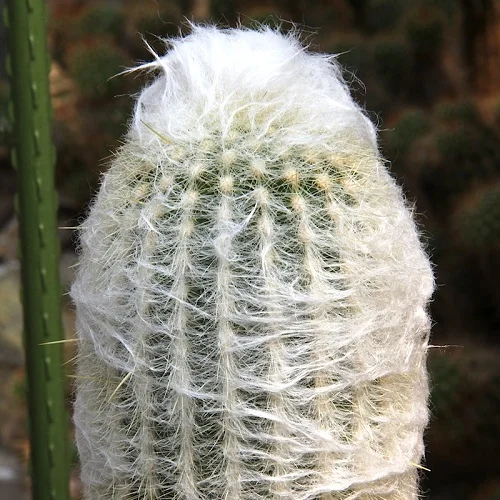
Espostoa species are columnar Cactus covered with spines and white hair which are native to the Andes of southern Ecuador and Peru.
Espostoa Cacti are popular on account of their unique appearance which is due to their white fleece which covers the stems.
There are about 16 species in the Espostoa Genus which include Espostoa hylaea, Espostoa blossfeldiorum, Espostoa senilis, Espostoa mirabilis among others.
11. Cephalocereus spp
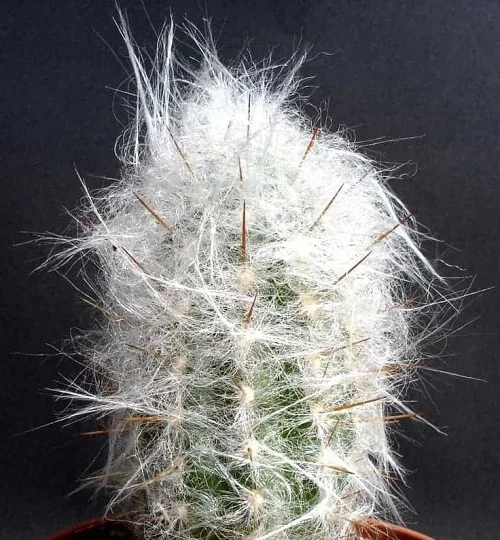
Cephalocereus species are slow-growing, columnar-shaped, blue-green Cactus about 12 ft tall, almost completely covered by dense thorns near the top.
The flowers are tubular to bell-shaped, borne in a woolly structure, can appear apically or laterally and open at night. The fruits are oval-shaped, have small scales and are woolly. The seeds are smooth, pear-shaped and black.
Some of the common species include Cephalocereus senilis (Old Man Cactus), Cephalocereus polylophus, Cephalocereus macrocephalus, Cephalocereus euphorbioides, Cephalocereus fulviceps and many others.
12. Astrophytum spp
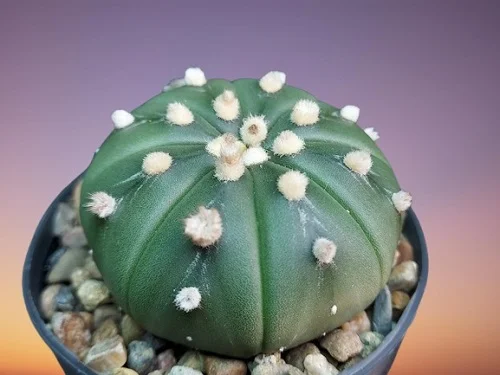
Astrophytum species grow individually with spherical to columnar green shoots with 4-10 ribs, often densely covered with fine white tufts of hair or bald and can reach the height of about 5 ft.
The large, funnel-shaped flowers come in yellow or yellow with a red throat and appear at the top of the shoots, opening during the day.
There are about 6 species in this Genus native to North America which are Astrophytum asterias (Star Cactus or Sand Dollar Cactus), Astrophytum capricorne (Goat's Horn Cactus), Astrophytum myriostigma (Bishop's Cap Cactus, Bishop's Hat or Bishop's Miter Cactus), Astrophytum ornatum (Monk's Hood Cactus), Astrophytum coahuilense and Astrophytum caput-medusae.
13. Opuntia spp
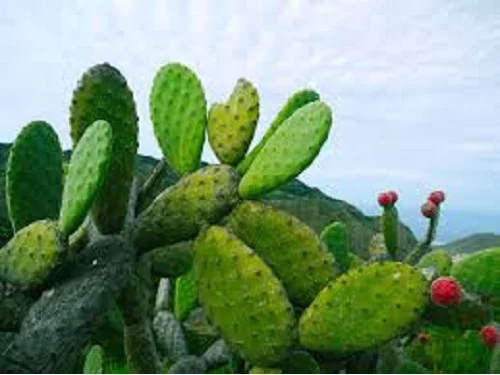
Opuntia species commonly called Prickly Pear Cactus have flat, rounded cladodes (also called platyclades) which contain large, smooth, fixed spines and small, hairlike prickles called glochids.
The common name Prickly Pear Cactus is in reference to the flavorful, edible fruit which comes from the brightly colored showy flowers.
The species in this Genus can vary greatly in habit. They include Opuntia microdasys (Bunny Ears Cactus, Bunny Cactus or Polka-dot Cactus), Opuntia basilaris (Beavertail Cactus or Beavertail Pricklypear), Opuntia aciculata (Chenille pricklypear, Old Man's Whiskers or Cowboy's Red Whiskers), Opuntia ammophila (Devil's-tongue), Opuntia anahuacensis, Opuntia azurea (Purple Prickly Pear), Opuntia cespitosa (Eastern Prickly Pear) among others.
14. Gymnocalycium spp
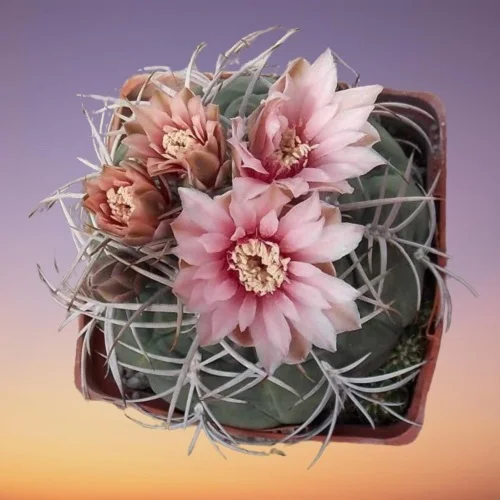
Gymnocalycium species commonly called Chin Cactus are usually solitary or sometimes small cushion-forming plants with globose, depressed-globular to short-cylindrical stems.
Chin Cactus bear diurnal, funnel-shaped or bell-shaped flowers at or near the apex which are white or pink, sometimes yellow or bright red.
There are about 70 species of Gymnocalycium Cactus and are native to South America. The common species include Gymnocalycium mihanovichii (Moon Cactus), Gymnocalycium bruchii, Gymnocalycium capillense, Gymnocalycium andreae, Gymnocalycium baldianum (Spider-cactus or Dwarf Chin Cactus), Gymnocalycium anisitsii among others.
15. Pereskia (Rose Cactus)
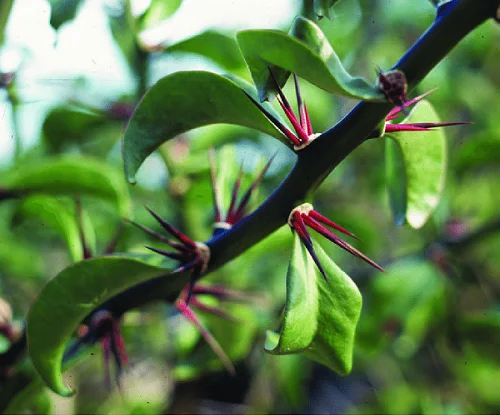
Pereskia species are odd Cactus as they bear non-succulent stems and true leaves. Their flowers look like wild roses and hence the common name Rose Cactus.
Rose Cactus can grow to a height of 6 ft. Like other Cacti, they have spines developing from areoles, and the distinctive floral cup of the cactus family.
There are four species in the Pereskia Genus which include Pereskia aculeata, Pereskia diaz-romeroana, Pereskia horrida and Pereskia weberiana.
16. Schlumbergera x buckleyi
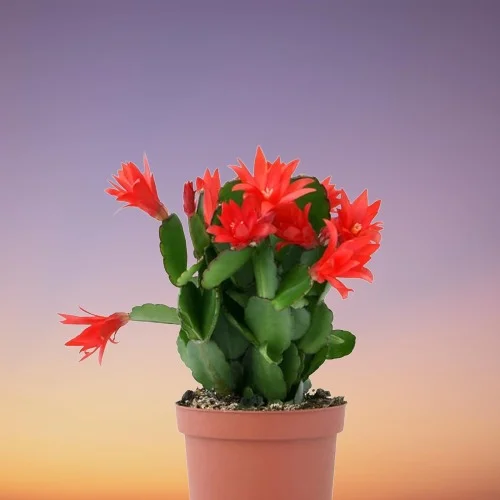
Schlumbergera x buckleyi commonly called Christmas Cactus, Holiday Cactus, Crab Cactus are epiphytic plants with fleshy, segmented, flattened stems, slightly serrated on each side and flowers at the ends of the stems which hang downwards beautifully in hanging baskets.
Christmas Cactus blooms in winter. The original flower color is red but hybrids may come in pink, purple, white and other colors. They hang down, below the horizontal and the pollen is pink.
Schlumbergera x buckleyi have their origin in South America in the coastal mountains of south-eastern Brazil. They are tropical plants which require bright filtered light, warm and humid conditions, and moderately moist, fertile, loose, free-draining soil.
16. Rhipsalidopsis gaertneri

Rhipsalidopsis gaertneri also called Schlumbergera gaertneri or Hatiora gaertneri are epiphytic plants which bear fleshy, segmented, flattened, dullish green stems with very rounded edges.
It is known by the common names Easter Cactus and Witsun Cactus. The scarlet, funnel-shaped flowers are borne at the ends of the stems in late winter to early spring. They come in red, white, pink, peach, orange, pink and lavender.
Easter Cactus is native to sub-tropical rain forest in southeastern Brazil, in Paraná and Santa Catarina. It is a widely cultivated ornamental plant which has received the Royal Horticultural Society's Award of Garden Merit.
17. Schlumbergera truncata
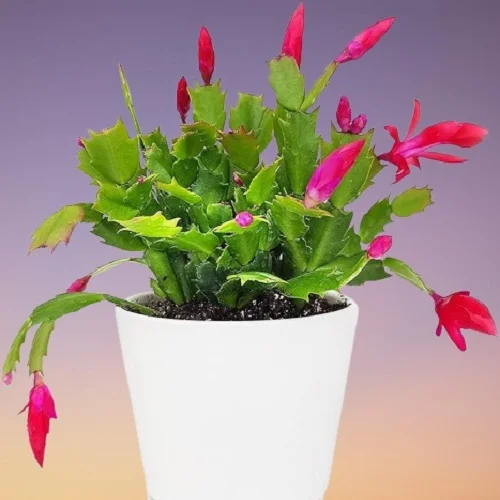
Schlumbergera truncata commonly called Thanksgiving Cactus or False Christmas Cactus are epiphytic plants with strongly flattened segments, which have two or three teeth of varying shapes along their edges and at the ends.
The ends of the stems are truncated rather than pointed. Areoles which have brown wool and bristles occur between two teeth at the end of segments are where the flower buds appear.
Flowers held at a constant angle somewhat above the horizontal with the higher side different from the lower side appear in fall in shades of red, orange, pink and white.
18. Epiphyllum spp
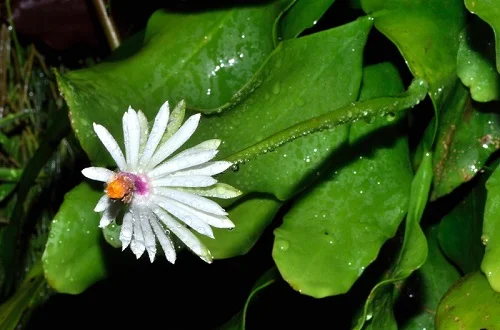
Epiphyllum species commonly called Climbing Cacti or Orchid Cacti are epiphytic plants with broad and flat leaves whose edges are usually lobed and are native to Central America and South America.
The flowers in Epiphyllum are large (about 6 in. diameter), in shades of white through red, have numerous petals and bloom only at night and wilt at dawn.
Epiphyllum Genus comprises of about 10 species. Some of the common species include Epiphyllum oxypetalum (Dutchman's Pipe Cactus), Princess of the Night or Queen of the Night), Epiphyllum hookeri, Epiphyllum laui, Epiphyllum pumilum, Epiphyllum baueri among others.
19. Carnegiea gigantea

Carnegiea gigantea commonly calles Saguaro is a tree-like, succulent plant that can grow to a height of 40 ft which is native to the Sonoran Desert in Arizona, the Mexican state of Sonora, and the Whipple Mountains and Imperial County areas of California.
Saguaro is a slow-growing, columnar cactus which grows notable branches (arms) where a single plant can grow over 50 arms. Inside the plant are ribs which are as long as the cactus itself and a few centimeters in diameter.
Saguaro bears white, waxy flowers in spring which form at the top of the plant and the tips of branches and open after sunset and close in mid-afternoon. They are attractive to bees, hummingbirds, bats and white-wnged doves.
20. Stenocereus spp
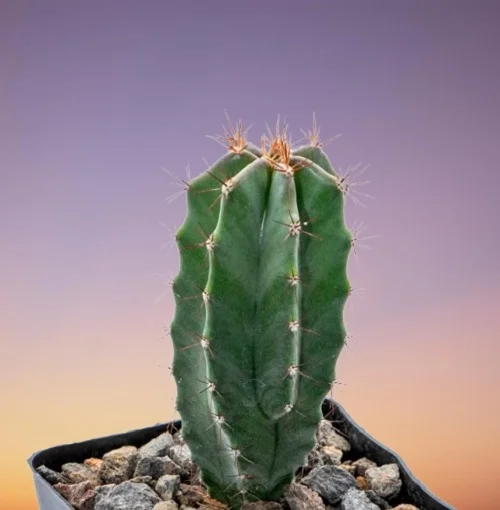
Stenocereus species are columnar Cactus native to Mexico, Arizona, Colombia, Costa Rica, Guatemala, Venezuela and the West Indies.
The flowers in Stenocereus are borne near the apex of the stems and are mostly nocturnal. Their fruit is similar to a dragon fruit and are often edible.
The common Stenocereus species are Stenocereus thurberi (Organ Pipe Cactus), Stenocereus gummosus, Stenocereus griseus (Mexican Organ Pipe, Dagger Cactus or Pitaya), Stenocereus aragonii, Stenocereus fimbriatus, Stenocereus queretaroensis and many others.
21. Ariocarpus spp
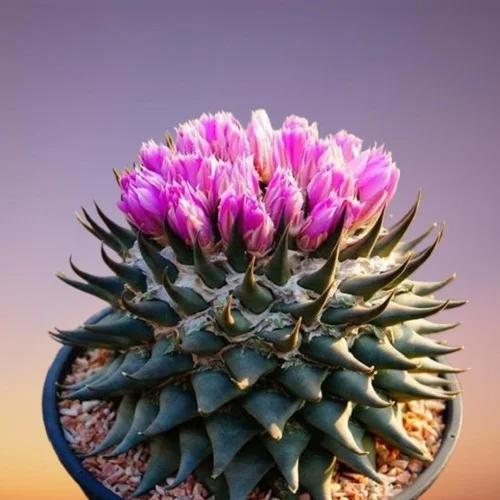
Ariocarpus species are slow-growing Cactus with thick tuberous tap-roots, are solitary or form small clusters of stems with triangular tubercles and may resemble leaves in some species.
Funnel-shaped flowers are borne on a woolly structure at the apex and vary in colour from white or yellow to pink, purple or magenta while the seeds are black and pear-shaped.
Ariocarpus have their origin in the limestone hills of Rio Grande in the south of Texas and the north and the center of Mexico.
Common species in the Ariocarpus Genus are Ariocarpus agavoides (Tamaulipas Living Rock Cactus), Ariocarpus retusus, Ariocarpus scaphirostris, Ariocarpus fissuratus, Ariocarpus trigonus among others.


